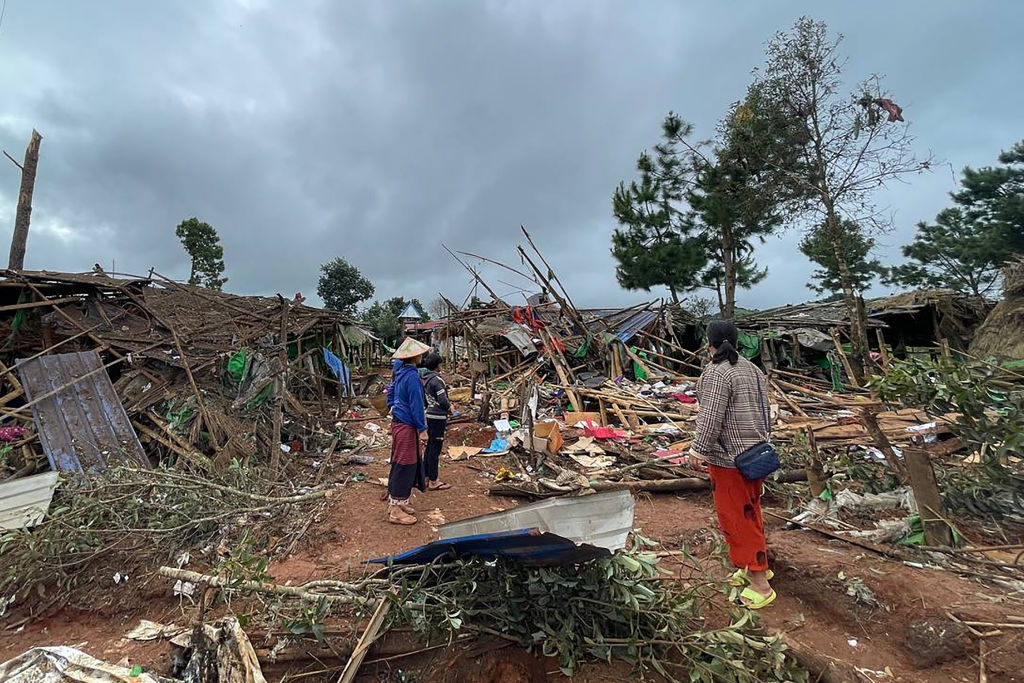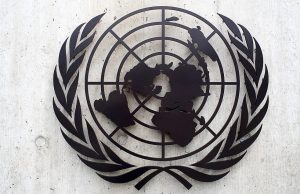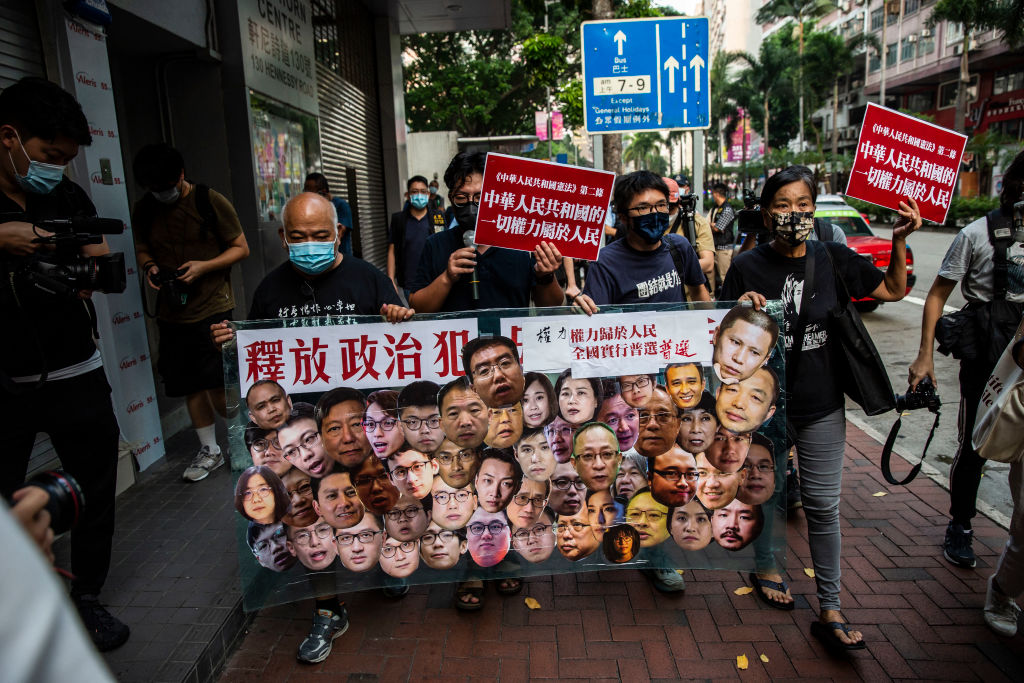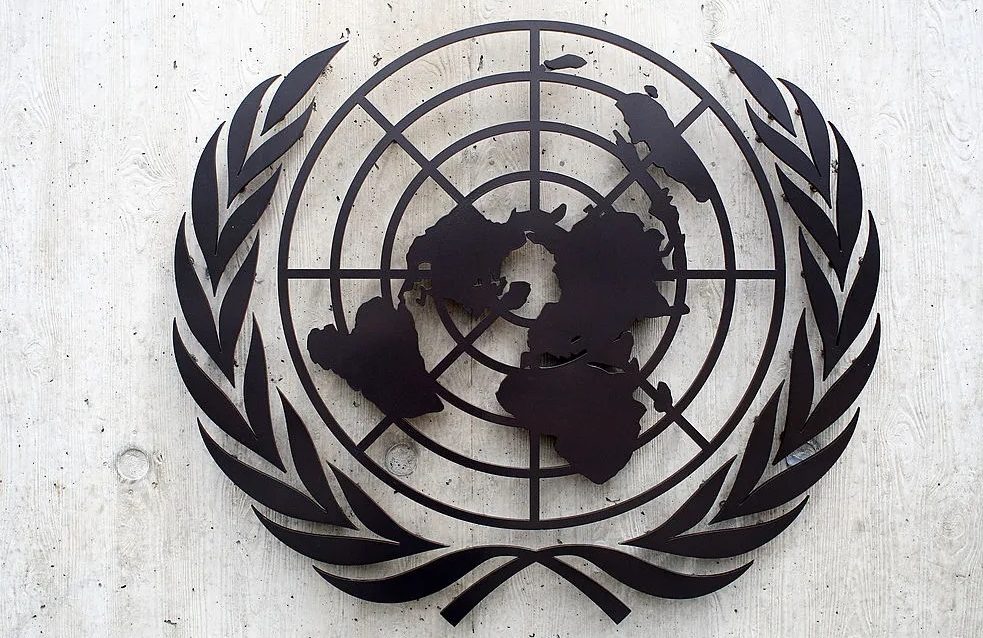It was about 9:15 p.m. on September 5 when the roaring sound of a warplane began to hum across the hills. Tucked away in a valley in Pekon Township in Myanmar, on the border with Karenni and Shan states, a community of some thousand people were about to go to sleep. Illuminated only by small solar-powered lights and campfires, mothers and fathers were putting their children to bed. But the junta jet fighter didn’t need light. It had already been given direct coordinates, and it was about to drop its payload directly on the camp.
The violence which has plagued Myanmar for over three years had once again come to Pekon. The warplane released two large bombs right into the heart of the settlement where hundreds of displaced families were living. Upon impact, the explosives decimated the bamboo and metal shelters, violently splintering bamboo into the air. Pieces of sheet metal took flight, tearing into everything in its path. Then the military fighter jet returned to machine gun strafe the camp one last time.
The scent of death still lingered among the carnage
The scene was pure hell — chaos and despair. Eight children were killed from the blasts. And one young woman, a local teacher at the community school, was blown away in front of her husband’s eyes. At least twenty-six others were injured.
The devastation was grim as I walked through the camp just two days after the bombing. Although the bodies had been cleared, the scent of death still lingered among the carnage. Days earlier, dozens of homes were packed tightly together in long rows. But now there was nothing left other than shattered debris lying in the mud. Two large craters could still be plainly seen, one to the far end of the camp, another directly on a house.
This attack was just the latest in a long string of air strikes to hit the country over the last year. Since Myanmar’s military seized power in a coup in February 2021 coup, at least 5,000 civilians have been killed, and tens of thousands of others have been detained. The junta came to power after overthrowing the elected civilian government of Aung San Suu Kyi and sparking countrywide street demonstrations. The military violently cracked down on the protests, openly killing mostly young people in the streets.
The protests against the new regime then evolved into armed resistance that quickly spread across the country. Within months, thousands of mostly Gen Z and millennial left urban areas and moved to the borderlands to join either long-held ethnic armed organizations (EAOs), who control large swathes of territory across the country, or People’s Defense Forces, (PDFs), newly formed guerrilla groups. The border area where the attack took place is largely under Karenni resistance control. Junta forces have lost around 80 percent of Karenni State since last year.
Ethnic minority groups, each with their own distinct languages, cultures and histories, have to a large degree started putting their differences aside, choosing to work together to quash the junta. The collective campaign against the Myanmar military presents the greatest challenge to the junta yet. These EAOs have held de facto control over their territories, establishing parallel administrations, judicial systems, and economic activities, often funded by local resources. Despite numerous peace negotiations and ceasefires over the years, the relationship between them and the Myanmar military remains fraught with tension, leading to escalating conflict since 2021 as they seek to protect their autonomy and cultural identity.
The Myanmar military is losing the conflict. What is becoming abundantly clear to anyone involved in the war, or for those simply trying to survive, is that as a result it has become increasingly desperate, resorting to renewed attacks on the civilian population from the sky. The military top brass has no qualms about killing children in their sleep.
In the first four months of 2024, Myanmar junta airstrikes killed over 359 civilians, including sixty-one children, and injured 756 others according to a study from Nyan Lin Thit Analytica, a research group which monitors regime crimes. An Amnesty International report from July revealed that despite sanctions imposed on parts of the military’s supply chain, shipments of aviation fuel are still arriving in Myanmar. According to the UN, between April 2023 and June 2024, hundreds have been killed by airstrikes and artillery attacks.
“I saw people were shouting ‘help me help me!’” Father Peaur Than, the local reverend who ran a church just meters away from the blast site, told me. “They ran up to me, some were bleeding, others told me there were some people without limbs who were injured during the attack. And so I tried to prepare for the wounded. I ran into the camp to help save anyone I could and also collect the dead bodies and put them in the church.”
The new momentum against the junta is seen clearest in the northern Shan State. On the northern front, the Three Brotherhood Alliance — comprising the Arakan Army (AA), the Myanmar National Democratic Alliance Army (MNDAA), and the Ta’ang National Liberation Army (TNLA) — has made significant gains since October last year. The alliance has captured key townships like Lashio and Mogok.
Across the country the junta is on the back foot
Now there is speculation that the city of Mandalay will soon fall to the resistance too. Across the country the junta is on the back foot, losing hundreds of outposts and numerous townships to the rebels. But it is responding to these sweeping wins with an escalation of airstrikes like the one seen in Pekon. These attacks have left civilians pleading for peace, begging for some kind of international intervention.
Before I left the camp, a young boy walked up to me and told me about how he lost one of his classmates in the attack. He said: “We were like brother and sister. But now she’s gone.” He was holding his friend’s graduation certificate from a summer English program which he recovered from the wreckage. He slowly moved through the site, sometimes staring blankly into the debris. The certificate he was holding was partially torn in half.
“The military is losing the war so they’re trying to kill innocent civilians,” a teacher from the school told me. She was one of the first to arrive on the scene of the destruction. “The entire community here is devastated. And the junta is trying to use trauma as a weapon. They’re trying to break our spirit.”
The village, which used to have one of the best schools in the area, had already been targeted at least four to five times over the last couple of years. But until then the jets had narrowly missed each time. Residents believe the military is targeting their camp because it has a thriving community, high level education, and a semblance of normality in the face of so much war. The displacement camp was also likely targeted because junta chief Min Aung Hlaing had issued a statement days earlier, vowing a counter offensive throughout rebel controlled territory.
Today, survivors of the attack are grappling to come to terms with a living nightmare, one that the military has deliberately forced them to endure. At the same time, Myanmar is facing one of its worst monsoon seasons on record, where over 200 people have died from flash floods in recent weeks.
“Don’t stop watching what the military is doing here,” the teacher told me with tears in her eyes. “Don’t look away. Please try to send the military to the International Criminal Court and stop them from being able to buy jet fuel. We just want peace. We want peace.”
This article was originally published on The Spectator’s UK website.


























Leave a Reply